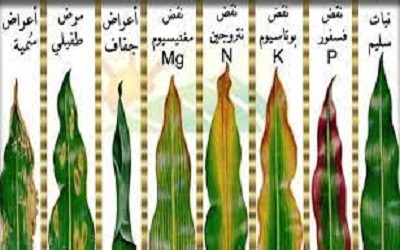| News Details |
(phytoremediation) Phytotherapy
2022-12-15

Upper Euphrates Basin Development Center - Anbar University
(phytoremediation):Term derived from two syllables and means plants and repair or treatment,This term is generally used to describe plants that remove pollutants in an ecosystem.
The effectiveness and power of phytotherapy appeared in 1983, but the concept has been around for 300 yearsgeneral,The use of plants to remove pollution from the environment is an engineering and regulatory processeTo treat sites contaminated with noble elements, organic and radioactive compounds, traces of explosives, oil and pesticides. It also includes a set of physical processes.and chemicaland biological aimingaMinearemoval of pollutantsaAnd thebook itaand analyzedaAnd its involvement in the operations of theanutritional supplement,Whether by plants or by living organisms in the root zone, plants help protect against wind, rain and soil erosion, and in this process hinder the spread of pollution from one area to another. The selection of plant species is one of the important decisions in the treatment, and there are standards and foundations that should be available in the plant species, namely
1-The plant has a high growth rate and biomass productionBiomass)).
2-The plant's ability to tolerate pollutant levels(.tolerance)
3- The plant's ability to tolerate waterlogging and drought conditions.
4- The ability of the plant to absorb, transport and accumulate pollutants inside it.
aWhataThey are the mechanisms of phytotherapy, they are:
1-plant transformations(Piytotransformation)
2 -Botanical validation(Phytostablization)
3 -Botanical extract((Phytoextraction
4 -Root zone biological treatment(Rhizosherebioremediation)
pollutant-tolerant plants(plant tolerance to pollution):
The technology of using plants in the treatment of contaminated lands depends mainly on the resistance of plants to pollutants, that is, the ability of plants to accumulate high concentrations of toxic substances within their tissues without affecting their life cycle.Plants that are resistant and able to tolerate organic and inorganic pollutants, remove the toxic and harmful effect, and extract and accumulate the pollutant have mechanisms, including:
Bonding of the element to the cell walls,The presence of a membrane resistant to heavy elements,Increased and distinct activity of cells resistant to pollutants, especially heavy elements,Presence of resistant enzymesTrapping pollutants in one place, such as collecting heavy metals in cell vacuoles,Claw items with organic or inorganic bonds.
Where biochemical processes occur that help plants resist heavy elements, acid phosphatase in cell walls andATPase))In the plasma membrane of root cells, they play a roleaWhateveraIn the transformations that occur to pollutants that work to remove the toxic effect inside the plant,Confining excess concentrations of the elements inside the succulent vacuoles of the cells or in the leaves is an effective strategy followed by the plant to avoidaThe toxic effect of the contaminated elements, as the gathering of the elements in the leaves and the fall of the leaves is considered one of the mechanisms that the plant can follow to resist the heavy elements. If the amount of fallen leaves is large, this means that these plants should not be used in the treatment of contaminated lands. Studies indicate that there are hundreds of speciesBotanicalResistanceand used in processingBotanicalWhich are distributed to plant families such as the compound familye(Asteraseae) and the mustard family (Brassiaceaeand the Saadia family(Cuberaceae)And legumese(Fabaceae) and PodaceaeBoaceae))and the papyrus family(Tybhaceae)
#Upper_Euphrates_Basin_Developing_Center

Indian mustard

sunflower

foxtail









